|
|
| Conservation |
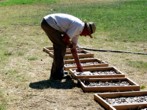 Interwoven with the excavation is the conservation of the archaeological remains being brought to light. The moment of discovery could prove catastrophic for the preservation of artefacts. Since they have been buried in the ground for thousands of years, their sudden exposure to atmospheric conditions, sunlight, and a lack of moisture is particularly harmful for their very make-up. The aim of the excavator is first to preserve intact, as far as is possible, the archaeological remains during their excavation and recording, and second, to protect moveable finds during their packing and transport. According to the type of the find, conservation is divided into two types: architectural and laboratory conservation. Interwoven with the excavation is the conservation of the archaeological remains being brought to light. The moment of discovery could prove catastrophic for the preservation of artefacts. Since they have been buried in the ground for thousands of years, their sudden exposure to atmospheric conditions, sunlight, and a lack of moisture is particularly harmful for their very make-up. The aim of the excavator is first to preserve intact, as far as is possible, the archaeological remains during their excavation and recording, and second, to protect moveable finds during their packing and transport. According to the type of the find, conservation is divided into two types: architectural and laboratory conservation. |
| |
| Architectural conservation |
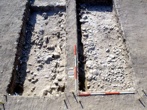 The architectural remains uncovered at the Paliambela site are in the main stone-paved areas and stone foundations of walls. Their excavation is carried out carefully so as to reveal them in as complete a form as possible. The most fragile constructional elements, such as mudbricks and floors, are recorded immediately, so that they are documented in their entirety. At the end of the field season the excavation trenches are covered by protective shelters, which remain in place throughout the year to protect the finds from the weather. The architectural remains uncovered at the Paliambela site are in the main stone-paved areas and stone foundations of walls. Their excavation is carried out carefully so as to reveal them in as complete a form as possible. The most fragile constructional elements, such as mudbricks and floors, are recorded immediately, so that they are documented in their entirety. At the end of the field season the excavation trenches are covered by protective shelters, which remain in place throughout the year to protect the finds from the weather.
|
| |
| Laboratory conservation |
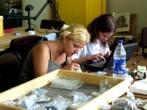 The moveable finds are packed in plastic bags and transferred to the storeroom, where they are given "first aid". Depending on the type of object, a specific procedure is followed. Sherds of pottery are first washed and then grouped in an attempt to recognise and join all those that belong to the same pot. In addition, the small finds are cleaned of any deposits and are put together. Finally, the architectural remains (mainly mudbricks) are drawn and stored. The moveable finds are packed in plastic bags and transferred to the storeroom, where they are given "first aid". Depending on the type of object, a specific procedure is followed. Sherds of pottery are first washed and then grouped in an attempt to recognise and join all those that belong to the same pot. In addition, the small finds are cleaned of any deposits and are put together. Finally, the architectural remains (mainly mudbricks) are drawn and stored.
|
| |
Conservation within the framework of the
archaeological park |
Within the framework of the planned archaeological park special care will be taken for the protection of the architectural remains and for making them easy to visit. The excavated area will be conserved and the necessary interventions will be made to ensure that the visitor can understand the archaeological image. Similar care will be taken as concerns the finds that will be chosen to form the body of the archaeological exhibition. Finally, in co-operation with the local authorities, there is a plan to take measures for the preservation of the architectural character of the village and for the environmental protection of the surrounding landscape.
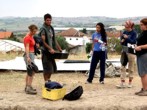 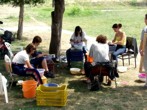
|
|
|





